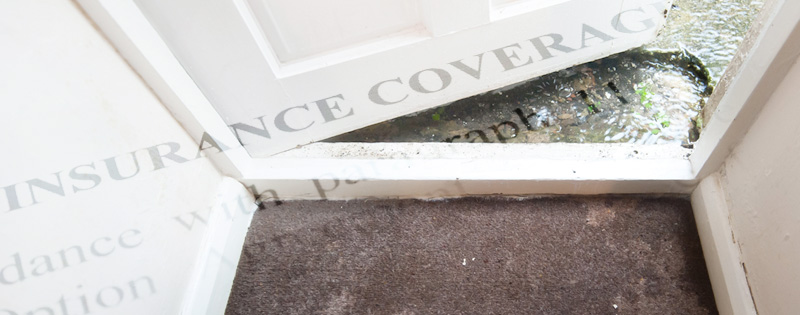What You Need To Know About Flood Insurance
Whether you live on a floodplain, on a mountain top, or in the middle of the desert, flooding is a realistic threat to your home. Flooding is a threat no matter where you live because it can come from many different sources. Sometimes, flooding occurs when excessive rain causes large bodies of water to expand. Other times, groundwater levels elevate and seep into basements and cellars. Still other times, flooding can be caused by overflow in roadside ditches. According to the National Flood Insurance website, nearly 20 percent of flood insurance claims come from moderate to low risk areas.
With so many sources of flooding present, it’s no surprise that the federal government and insurance companies push flood insurance so much. But what level of coverage you should get varies on where you live, how much your home is worth, and the value of your possessions. Before you decide on a flood insurance plan, you need to know some basic facts. Here are the need-to-know facts about flood insurance.
1. Flooding Isn't Covered By A Homeowner's Policy
Too often, people assume that everything a home needs is covered by a home insurance plan. Unfortunately, flood insurance is not covered by your basic home insurance plan. To be covered against a flood, you have to buy insurance either through the government’s program or through a private insurance company.
When buying a separate flood insurance policy, you should be aware of how much insurance you are purchasing. If you purchase insurance through the government, the government will cover up to $250,000 in damages. If you have a home worth more than that amount or wish to buy additional insurance to cover the contents of your home, you can buy it from a private insurer through an Excess Flood Protection plan. To participate in the National Flood Insurance Program (NFIP), you must live in an area that participates in the NFIP, though. Otherwise, you’ll need to buy a separate policy.
2. You Can Be Required To Purchase Flood Insurance
If you live in a high risk area for flooding, the federal government requires that you purchase flood insurance if you are using federal financial assistance. If you do not live in a high risk area, you might still be required to purchase flood insurance by your lender. Because a lender is technically partial owner of the property, they have a right to protect their investment if need be. Part of this is insuring your home against disasters.
Generally speaking, if there is any risk of flooding in your area, you should be purchasing some level of flood insurance, regardless of if your lender requires you to do so. You have even more of an interest in keeping your property safe than your lender does, so purchasing flood insurance for a property that is at risk should be a no-brainer.
3. Flood Insurance Doesn't Cover Everything Water-Related
It is a mistake to think that the only type of water damage coverage you’ll need is flood insurance. In fact, flood insurance covers only events which the NFIP, or your private insurer, defines as a flood. It's extremely important to go over exactly what situations your insurance covers you for.
The NFIP defines a flood as an overflow of inland or tidal waters and unusual and rapid accumulation or runoff of surface waters from any source.” The flood must also be a general and temporary condition of partial or complete inundation of two or more acres of normally dry land area or of two or more properties.”So, if there is an unusually strong rainstorm and water seeps into your home through holes, creating puddles in your house, that does not count as a flood to the NFIP and will not be covered.
Of course, the level of coverage changes based on where you live, how much you're willing to pay, and what company you choose to go with. So, use the NFIP definition as a guideline for what is considered a flood.
Getting The Coverage You Need
If you are looking to buy flood insurance, there are several paths you can take. You can either go with a private company, who will insure you to your desired amount, or you can be insured through the NFIP. Most major insurance companies offer some sort of flood insurance plan, so you might be able to bundle your home, auto, or life insurance plan with your flood insurance plan for added savings. To get insurance through the NFIP, you will need to go through one of these approved companies.
Whether or not to get flood insurance is a tough decision to make. However, if you are in a flood prone area, getting coverage is an excellent idea. Research your price and coverage options and plan out a budget before buying a plan. That way, you can get only the coverage you need.

